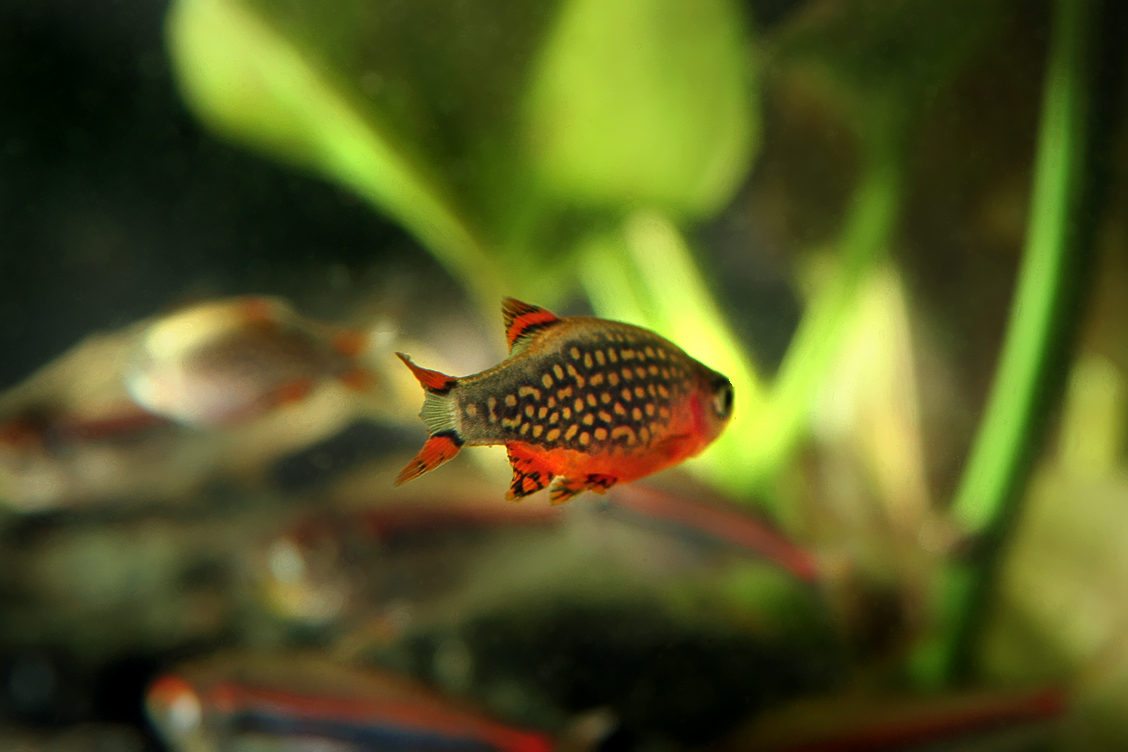Nestled in the waters of India and Pakistan, a fascinating little fish known as the YoYo Loach (Botia almorhae) has captured the hearts of aquarium enthusiasts worldwide. These charming bottom-dwellers belong to the Botiidae family and are closely related to other popular loaches like the Clown Loach and Zebra Loach.
Table of Contents
Interestingly, YoYo Loaches have earned a myriad of monikers in the aquarium trade. You might hear them referred to as Pakistani Loaches, Almora Loaches, or even Reticulated Loaches. But what makes these fish so captivating?
One fun fact about YoYo Loaches is their unique appearance. Their bodies are adorned with intricate patterns resembling the letters “Y” and “O,” hence their playful name. These striking markings serve as a form of camouflage in their natural habitat, helping them blend in with the substrate and avoid predators.
Speaking of habitat, YoYo Loaches are native to the fast-flowing streams and rivers of the Indian subcontinent. They thrive in well-oxygenated waters with a temperature range of 75-86°F (24-30°C) and a pH between 6.0 and 7.5. As bottom-dwellers, they prefer a soft, sandy substrate where they can forage for food and burrow when needed.
When it comes to diet, YoYo Loaches are omnivorous opportunists. In the wild, they feed on a variety of small invertebrates, algae, and detritus. In captivity, they readily accept sinking pellets, frozen foods like bloodworms and brine shrimp, and the occasional blanched vegetable. It’s essential to provide them with a balanced diet to maintain their health and vibrant colors.
One interesting statistic about YoYo Loaches is their average lifespan. With proper care, these resilient fish can live up to 8-10 years in captivity, making them a long-term commitment for dedicated aquarists.
In terms of behavior and temperament, YoYo Loaches are known for their lively and social nature. They thrive in groups of at least 5-6 individuals, as they enjoy the company of their own kind. However, they can be a bit boisterous and may occasionally nip at the fins of slower-moving tankmates. It’s best to keep them with similarly sized, active fish that can hold their own.
The history of YoYo Loaches in the aquarium trade dates back to the 1950s when they were first imported to Europe. Since then, they have gained popularity among fish keepers for their hardiness, entertaining antics, and ability to help keep the tank clean by scavenging leftover food and debris.
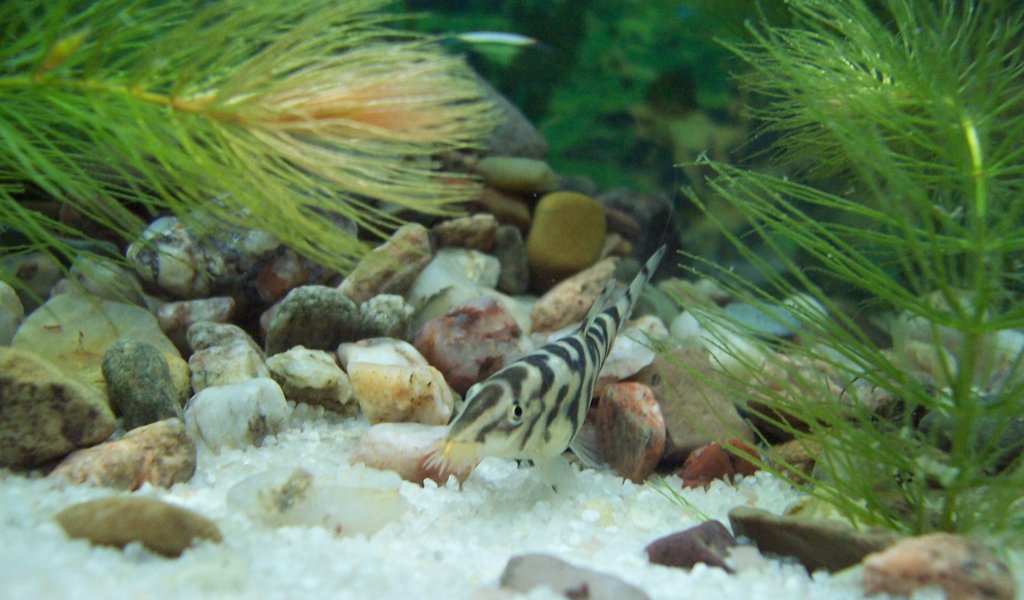
Key Information
The YoYo Loach (Botia almorhae) is a captivating freshwater fish known for its striking appearance. Their slender, elongated bodies are adorned with a mesmerizing pattern of dark, reticulated bands against a silvery-gray background. These intricate markings resemble the letters “Y” and “O,” giving rise to their popular name. The fins are transparent with a hint of yellow, adding to their overall charm.
| Family | Botiidae |
| Origin | India and Pakistan |
| Price | $5 to $10 per fish |
| Common Names | YoYo Loach, Pakistani Loach, Almora Loach, Reticulated Loach |
| Variants | None |
| Ideal Tank Size | 30 gallons or larger |
| Water Parameters | Temperature: 75-86°F (24-30°C), pH: 6.0-7.5, Hardness: 5-12 dGH |
| Lifespan | 8-10 years |
| Full Size | 2.5-3 inches (6-7.5 cm) |
| Natural Environment | Fast-flowing streams and rivers in India and Pakistan |
| Behavior | Active, social, bottom-dwelling |
| Habitat Preference | Well-oxygenated waters with sandy substrate |
| Aquarium Decoration | Soft sand, rocks, driftwood, and live plants |
| Ideal Tank Mates | Peaceful, similarly sized fish (e.g., Barbs, Rasboras, Tetras) |
| Fish to Avoid | Large, aggressive fish or slow-moving, long-finned species |
| Best Foods/Diet | Sinking pellets, frozen foods (bloodworms, brine shrimp), blanched vegetables |
| Disease | Susceptible to common freshwater diseases if water quality is poor |
| Sex-Switch | No |
| Gender Differences | Difficult to distinguish, females may be slightly larger and rounder when mature |
| Care Level | Easy to moderate |
| Breeding Level | Difficult, rarely achieved in captivity |
Ideal Tank Mates
When choosing tank mates for YoYo Loaches (Botia almorhae), it’s essential to consider their active nature, social behavior, and preferred habitat. These lively bottom-dwellers thrive in the company of their own kind and can be kept in groups of 5-6 individuals or more. However, they can also coexist peacefully with other similarly sized, active fish that share their water parameters and are not too slow-moving or long-finned.
YoYo Loaches are generally good-natured and can add a delightful dynamic to a community aquarium. They are known to be mildly territorial, especially when defending their favorite hiding spots, but they rarely cause significant harm to their tank mates. It’s important to provide plenty of space, hiding places, and a well-maintained environment to minimize any potential aggression.
Here are 15 ideal tank mates for YoYo Loaches, along with explanations for their compatibility:
1. Barbs (e.g., Tiger Barbs, Cherry Barbs, Rosy Barbs)
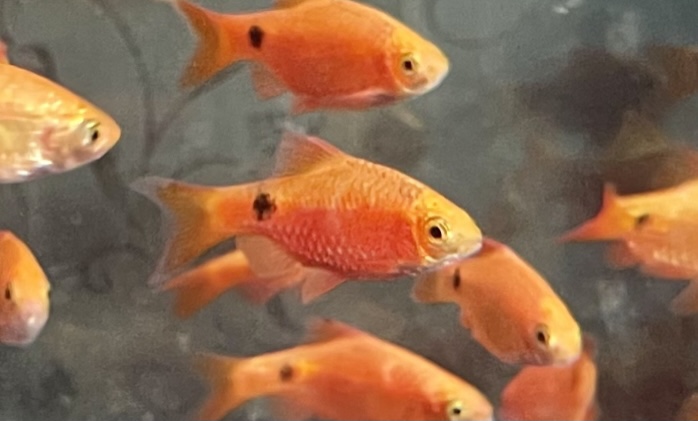
Barbs are active, schooling fish that share similar water preferences with YoYo Loaches. They are fast swimmers and can hold their own in the presence of the lively loaches.
2. Rasboras (e.g., Harlequin Rasboras, Lambchop Rasboras, Scissortail Rasboras)
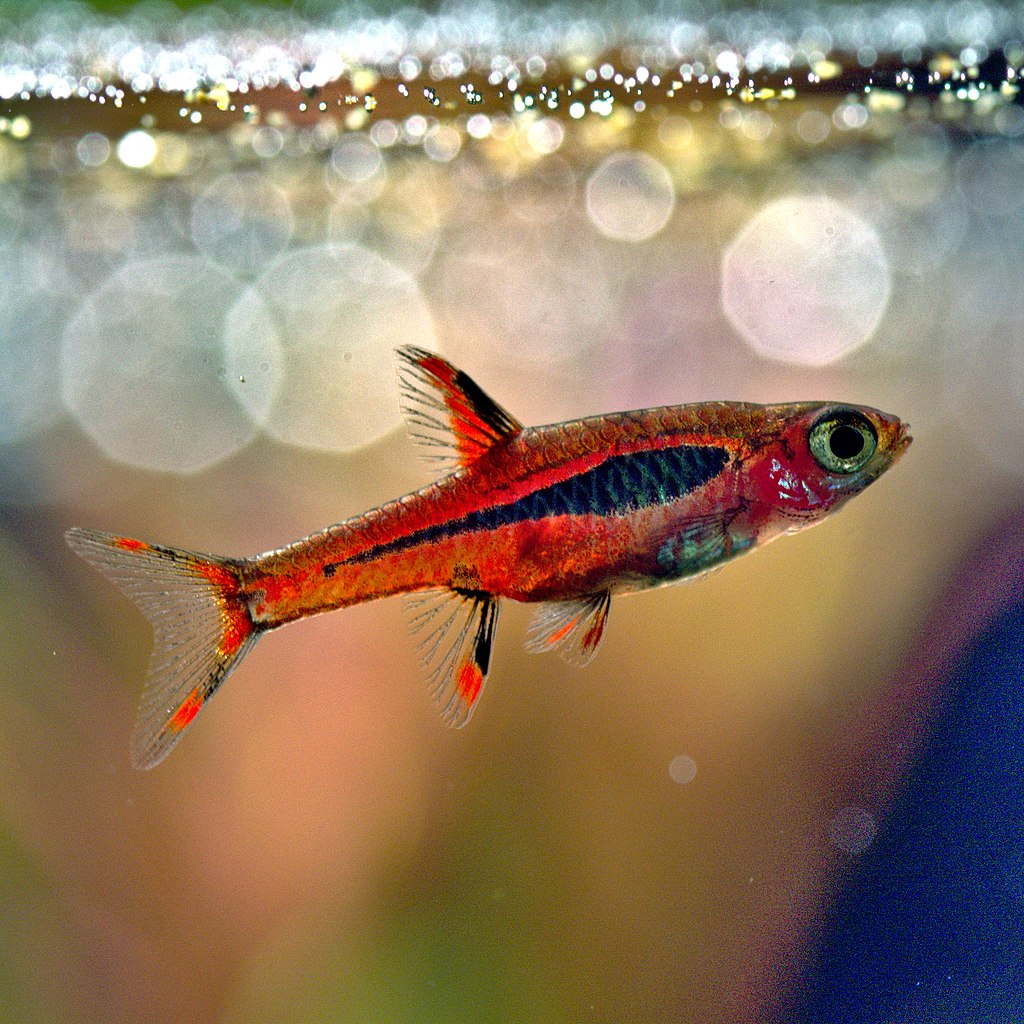
Rasboras are peaceful, schooling fish that add a splash of color to the aquarium. They occupy the middle and upper levels of the tank, complementing the bottom-dwelling YoYo Loaches.
3. Tetras (e.g., Neon Tetras, Cardinal Tetras, Rummy Nose Tetras)
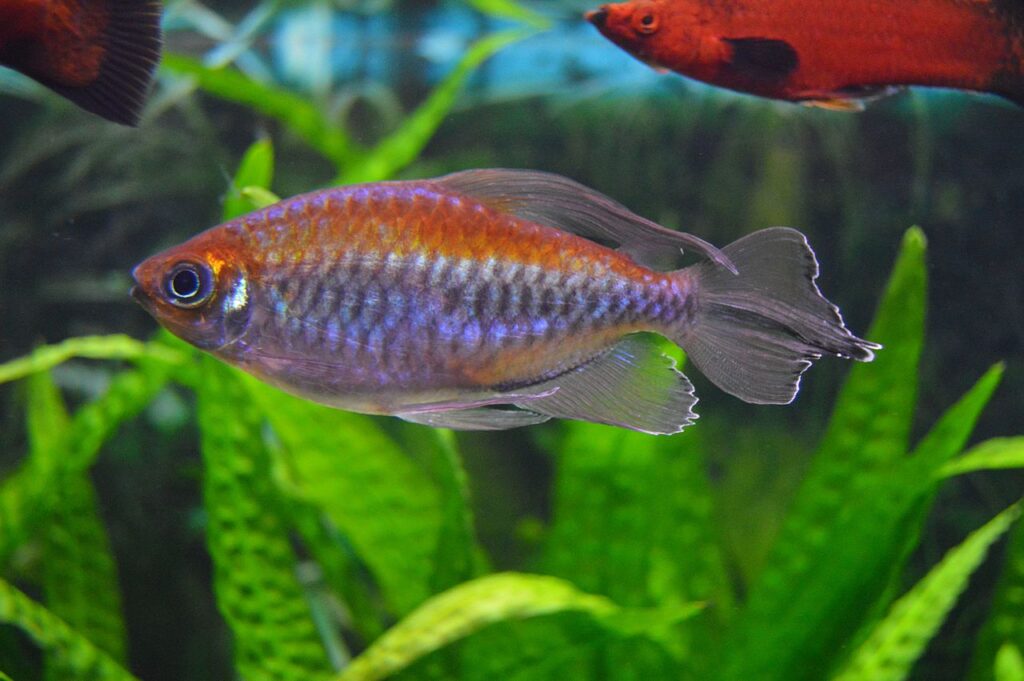
Tetras are another group of small, colorful schooling fish that can coexist harmoniously with YoYo Loaches. They are active swimmers and will not compete for the same space as the loaches.
4. Corydoras Catfish
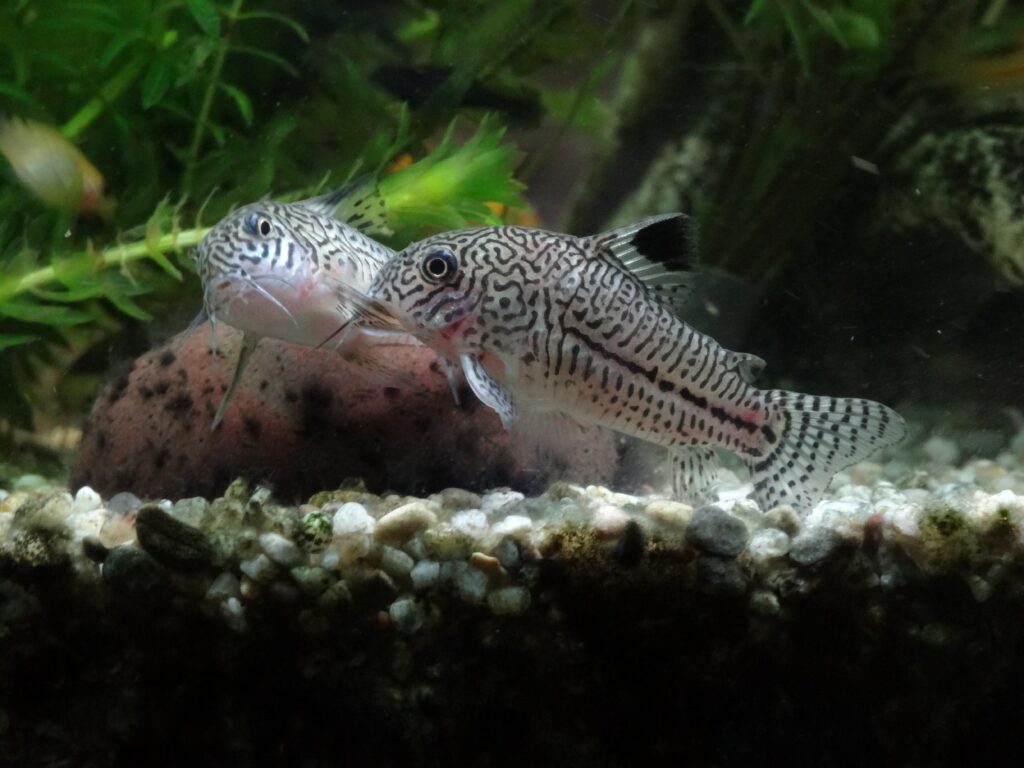
Corydoras are peaceful bottom-dwellers that can share the substrate with YoYo Loaches. They are scavengers and will help keep the tank clean by consuming leftover food particles.
5. Kuhli Loaches
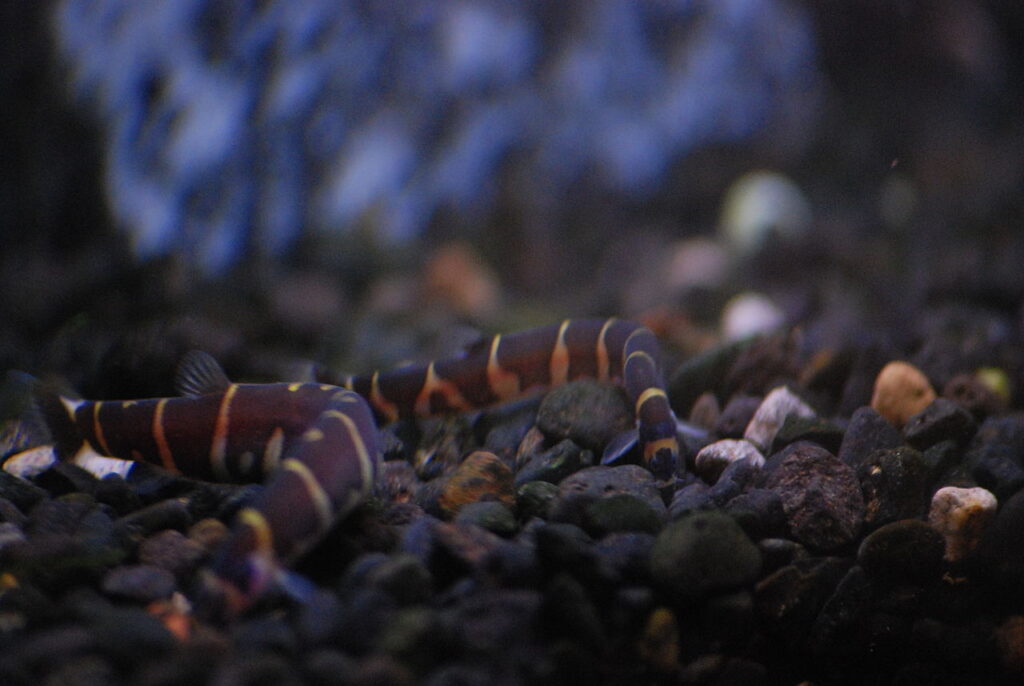
Kuhli Loaches are eel-like bottom-dwellers that share similar preferences with YoYo Loaches. They are peaceful and can form an interesting dynamic with their loach counterparts.
6. Otocinclus Catfish
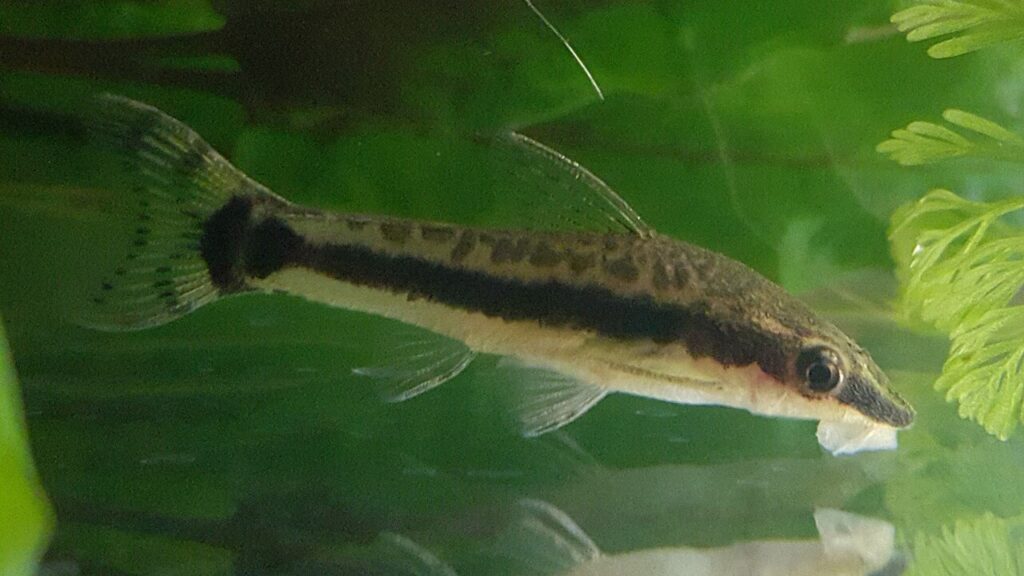
Otocinclus Catfish are small, algae-eating fish that are well-suited for planted tanks. They are peaceful and will not compete with YoYo Loaches for food or space.
7. Zebra Danios
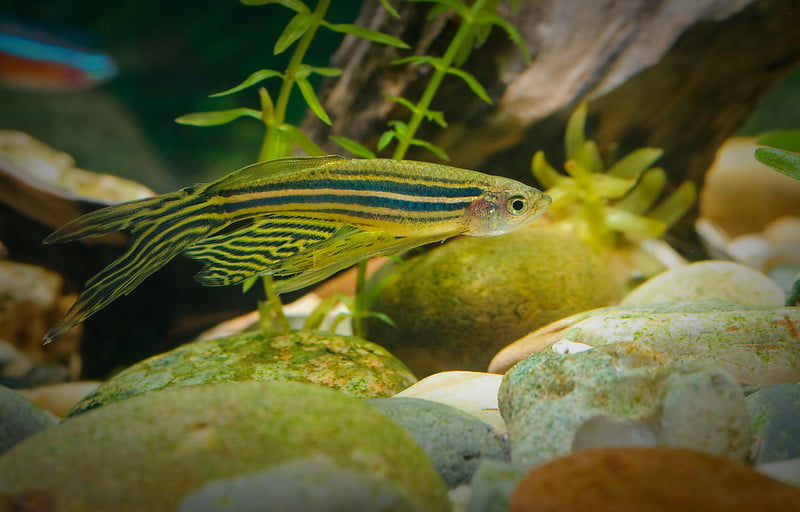
Zebra Danios are hardy, active fish that can adapt to a wide range of water conditions. They are fast swimmers and will not be intimidated by the energetic YoYo Loaches.
8. Dwarf Cichlids (e.g., Apistogramma, Rams)
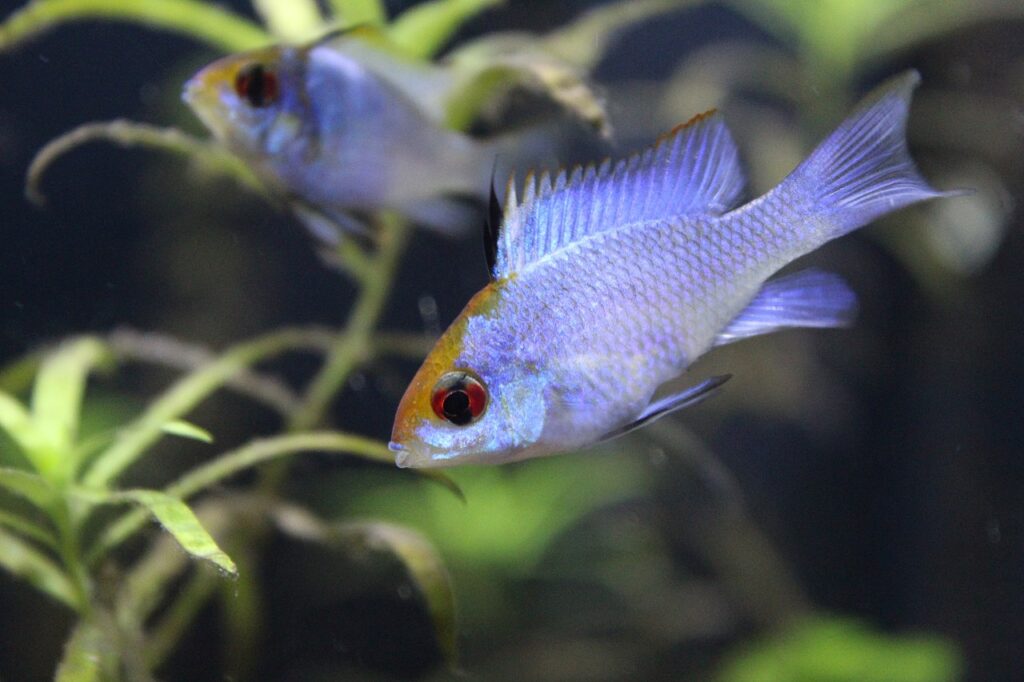
Dwarf Cichlids are small, colorful fish that can be kept with YoYo Loaches in larger aquariums. They are generally peaceful, but provide them with plenty of hiding places to minimize territorial disputes.
9. Gouramis (e.g., Honey Gouramis, Pearl Gouramis)
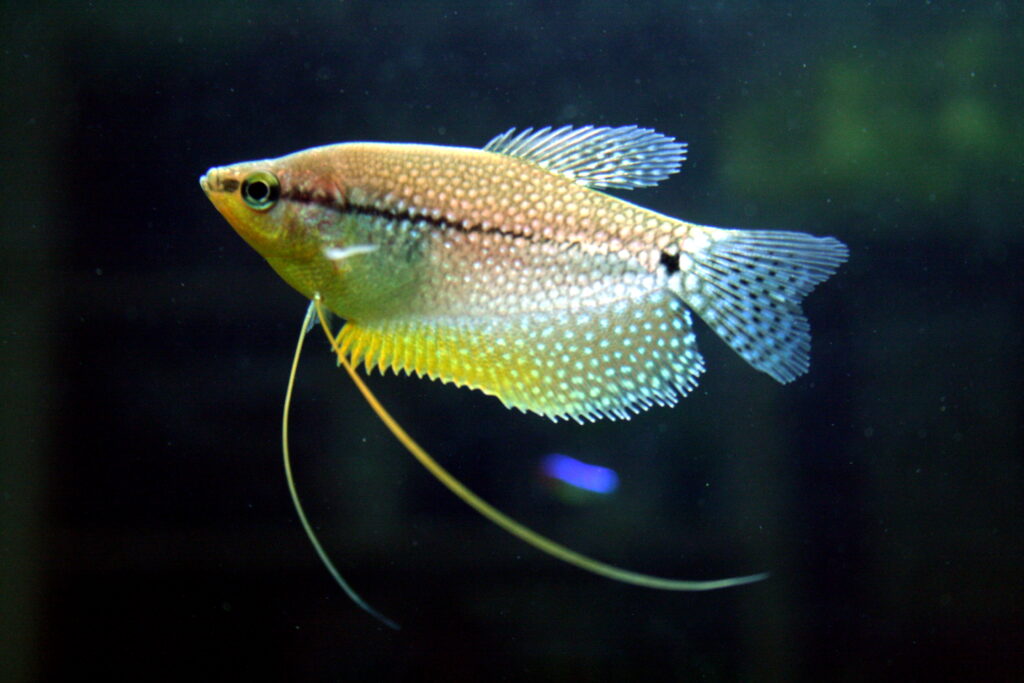
Gouramis are peaceful, labyrinth fish that inhabit the upper levels of the tank. They are slow swimmers but can coexist with YoYo Loaches if provided with ample space and hiding spots.
10. Bristlenose Plecos
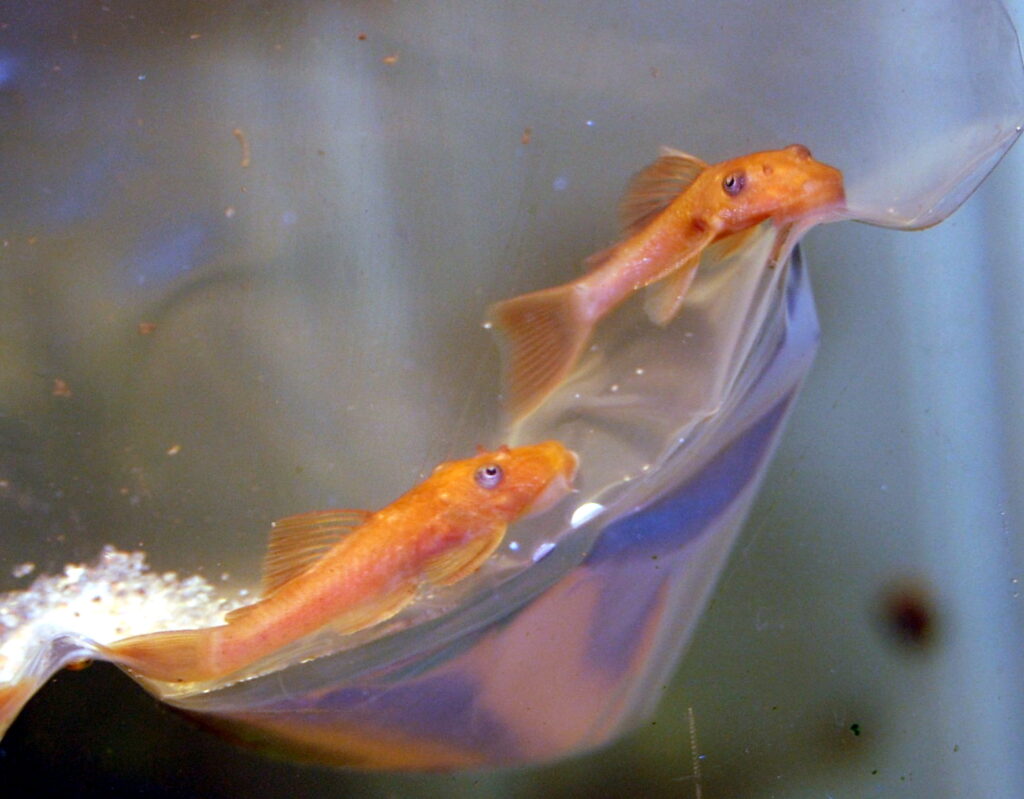
Bristlenose Plecos are small, algae-eating catfish that are compatible with YoYo Loaches. They are peaceful bottom-dwellers and will help keep the tank clean.
11. Siamese Algae Eaters
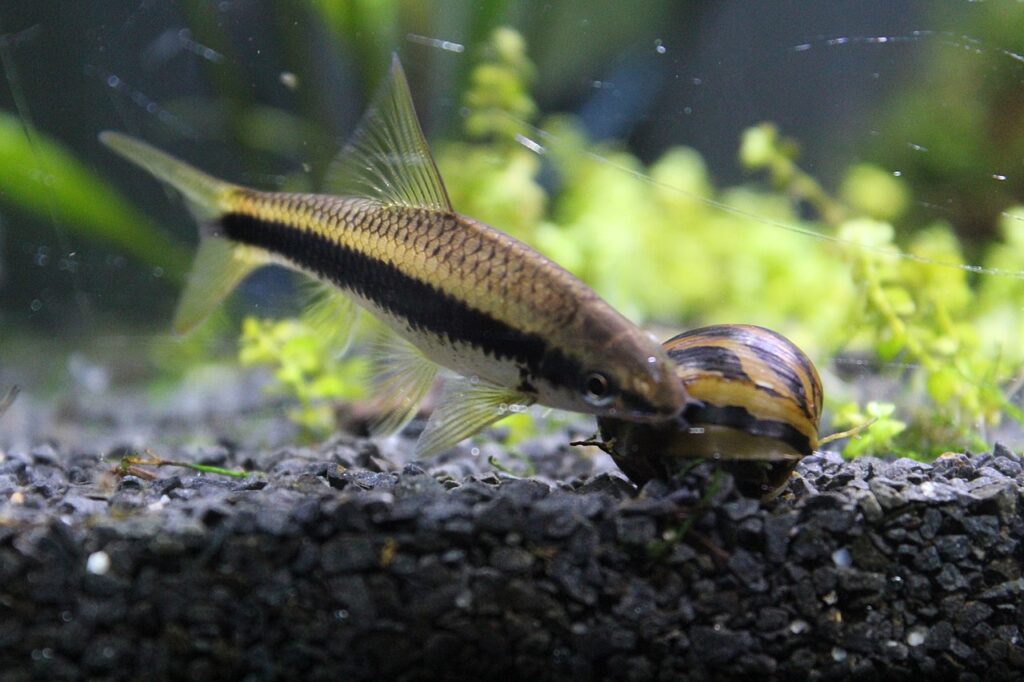
Siamese Algae Eaters are active, peaceful fish that help control algae growth in the aquarium. They are fast swimmers and will not compete with YoYo Loaches for space.
12. Rainbowfish (e.g., Boesemani Rainbowfish, Turquoise Rainbowfish)
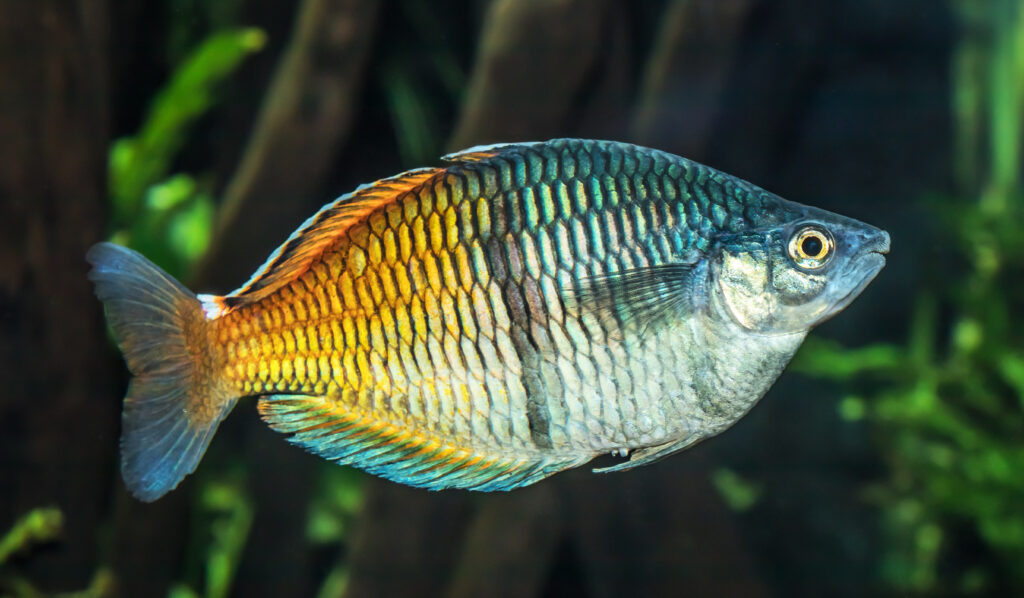
Rainbowfish are colorful, active fish that occupy the middle and upper levels of the tank. They are peaceful and can add a vibrant touch to the aquarium alongside YoYo Loaches.
13. White Cloud Mountain Minnows
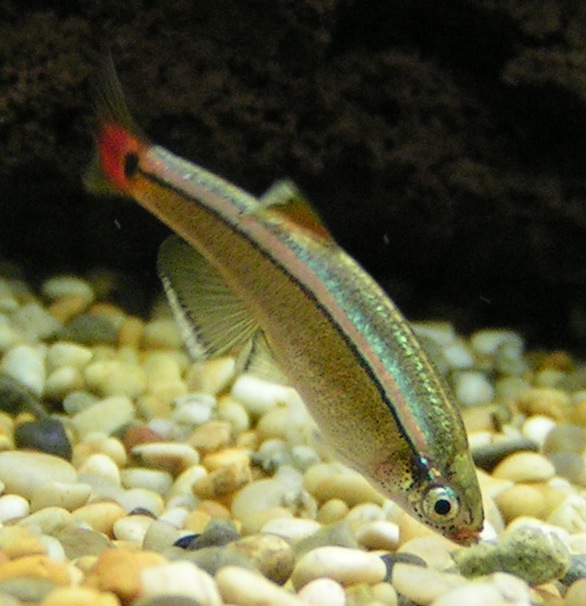
White Cloud Mountain Minnows are hardy, peaceful fish that can adapt to a wide range of water conditions. They are active swimmers and will not outcompete YoYo Loaches for food or space.
14. Peacock Gobies
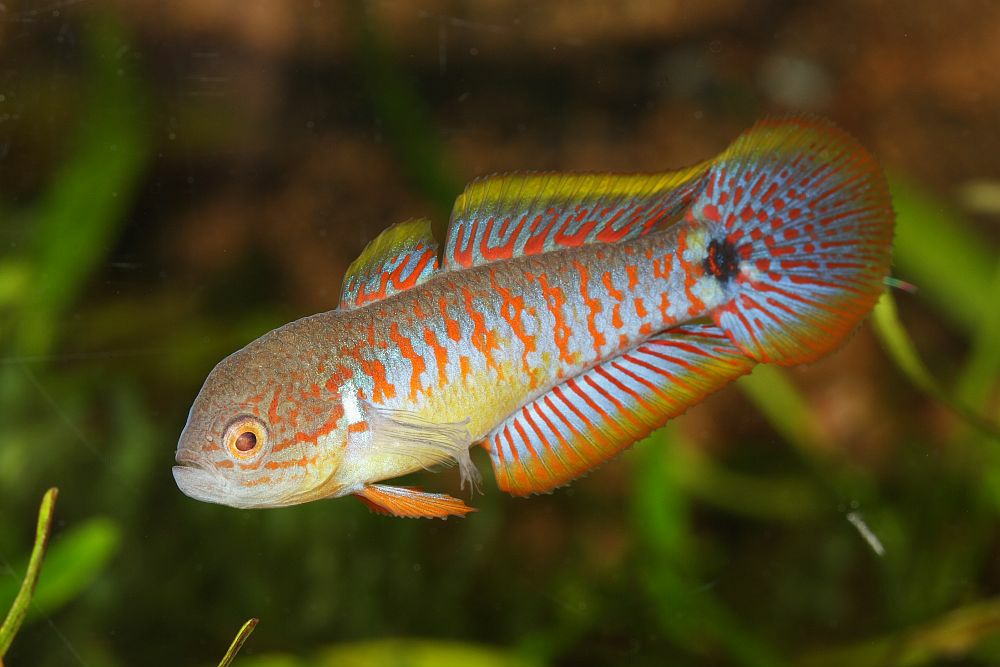
Peacock Gobies are small, colorful bottom-dwellers that can coexist peacefully with YoYo Loaches. They are active and will help keep the substrate clean by consuming leftover food particles.
15. Cherry Shrimp
Cherry Shrimp are small, peaceful invertebrates that can add a pop of color to the aquarium. While they may occasionally become a snack for larger YoYo Loaches, they can still thrive in a well-planted tank with plenty of hiding spots.
FAQs
How many YoYo Loaches should I keep in my aquarium?
YoYo Loaches are social fish that thrive in groups. It’s recommended to keep at least 5-6 individuals together to ensure their well-being and minimize any aggressive behavior. In larger aquariums, you can even keep them in schools of 10 or more.
Can YoYo Loaches jump out of the tank?
Yes, YoYo Loaches are known to be excellent jumpers, especially when startled or stressed. To prevent them from escaping, make sure your aquarium has a tight-fitting lid or cover that leaves no gaps.
How often should I feed my YoYo Loaches?
Feed your YoYo Loaches 2-3 times a day, offering only what they can consume within 2-3 minutes. Overfeeding can lead to health issues and poor water quality, so be sure to remove any uneaten food after each feeding session.
Can YoYo Loaches live with shrimp?
While YoYo Loaches can coexist with larger shrimp species like Bamboo Shrimp or Amano Shrimp, they may view smaller shrimp, such as Cherry Shrimp, as prey. If you plan to keep shrimp with YoYo Loaches, provide plenty of hiding spots and dense vegetation for the shrimp to seek refuge.
How can I tell if my YoYo Loach is stressed?
Signs of stress in YoYo Loaches include loss of appetite, hiding excessively, rapid breathing, or darting erratically around the tank. These behaviors can be caused by poor water quality, inadequate hiding spots, or incompatible tank mates. Address any potential stressors promptly to ensure your loaches remain healthy and happy.
Do YoYo Loaches need a heater?
Yes, YoYo Loaches are tropical fish that require a stable water temperature between 75-86°F (24-30°C). Use a reliable aquarium heater to maintain the appropriate temperature range and avoid sudden fluctuations that can stress your fish.
How can I encourage natural behavior in my YoYo Loaches?
To promote natural behavior, provide your YoYo Loaches with a soft, sandy substrate that allows them to forage and burrow. Include plenty of hiding spots using rocks, driftwood, and caves, as well as some live plants for added cover. Maintain good water quality and offer a varied diet to keep your loaches active and engaged.
Can YoYo Loaches be kept with African Cichlids?
While YoYo Loaches are adaptable and can tolerate a wide range of water parameters, they are not the best choice for an African Cichlid tank. Most African Cichlids are aggressive and may harass or outcompete the loaches for food and territory. It’s best to keep YoYo Loaches with more peaceful, similarly sized fish that share their preferred water conditions.





